February 14, 2011
Ponds
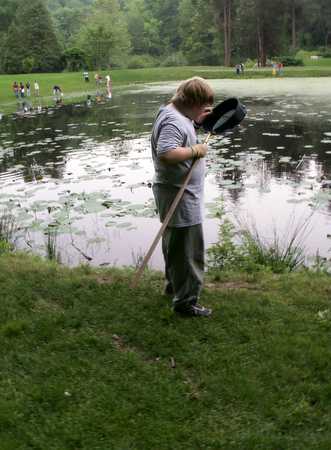
A fourth grader carefully checks his net for pond creatures.
After arriving on the school bus at the cabin on Porter Lake in Forest Park, 4th grade students will begin their ECOS program by studying habitats. Through hands-on discovery activities, such as temporarily netting and capturing and then examining the creatures and plants in forest, field and pond environments, they learn about the different plants and animals that live in each and how they are interconnected. Students learn the basic survival needs of all living things: sun, food, air, water, shelter and space.
After exploring each habitat, they begin to understand how all the habitats in Forest Park are interdependent. The theme of habitats and their populations is carried forward in a discussion of the students� neighborhoods and the wider world.
But it is the plants and animals and places that they may have never seen, some quite exotic, that stir the students� imaginations and encourage them to look around at the world we share. Nearly all of what you see here has been either caught (and later released) or discovered by fourth and fifth grade ECOS students during the spring of 2006. Some plants and animals that were seen over the summer are included.
The ponds are especially rich in plant and animal species. Here some insects begin life as nymphs; carnivorous beetles dive for food within a bubble to use for air; tadpoles turn into frogs and snapping turtles eat anything they want.
The students learn that the best way to capture specimens is to drag the net through the mud at the edge of the pond and then use their fingers to find anything moving in it. After one classmate finds a fish or a tadpole by getting muddy hands, most of the rest of the students resign themselves to it. When the plants and animals have been netted, they are examined, identified and counted. After the ECOS staff leads a discussion of the habitat's dynamics, it's time for lunch.
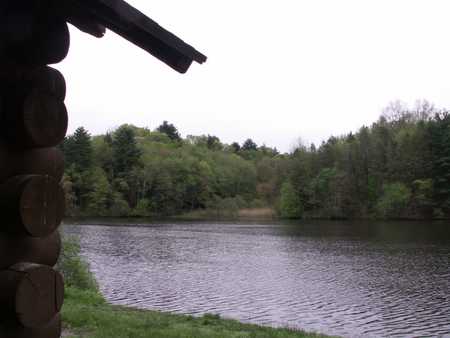
A windy May morning at the ECOS cabin on Porter Lake.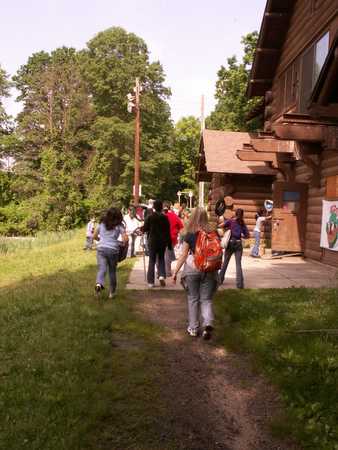
Students, teachers and parents head to the pond with their nets and containers for their catches.

ECOS teacher Ms. Orellana's students drop by the Duck Pond to observe...
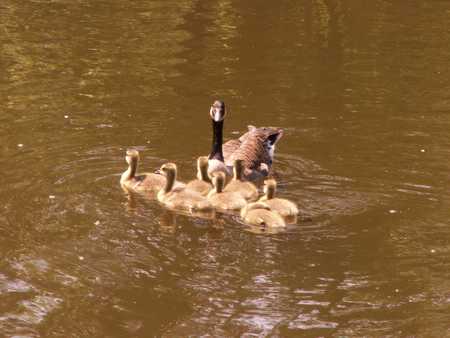
... a Canada Goose and its 7 goslings.
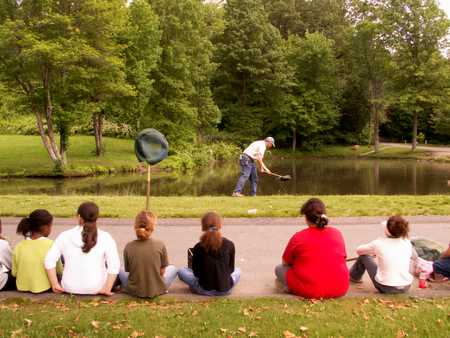
ECOS teacher Mr. Freedman demonstrates use of the net at the pond.
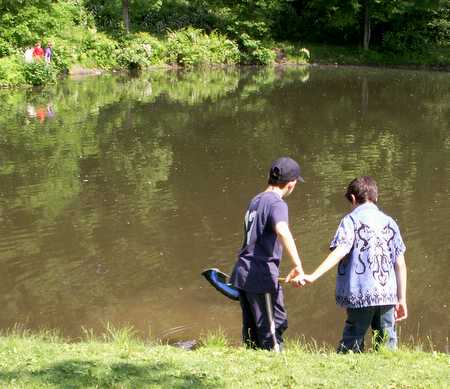
The students get started looking for something to catch.
A pair of students search through the mud in their net for creatures from the pond.
ECOS teacher Mr. Haley helps a student identify his catch before placing it in the collection bucket with the other animals and plants.
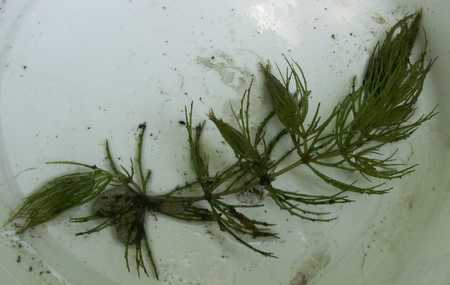
Elodea, a water plant, is an important source of food in the pond, and is on the list of plants and animals the students are asked to search for.
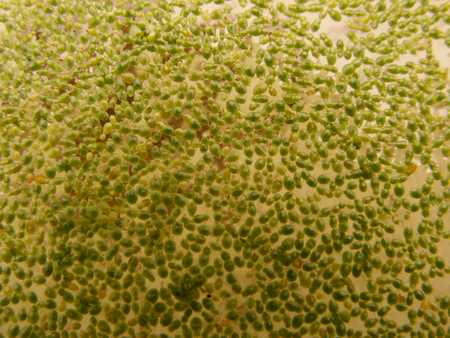
One of the other important food producers in the pond is Duckweed, here seen greatly magnified. It is often mistakenly called algae.
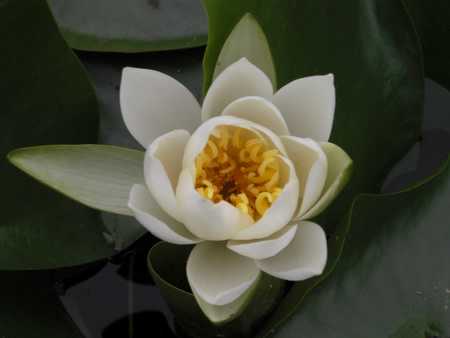 White Water-Lilies cover many of the ponds, and their leaves, called pads, provide frogs both places to hide from predators and places to perch for catching insects.
White Water-Lilies cover many of the ponds, and their leaves, called pads, provide frogs both places to hide from predators and places to perch for catching insects.
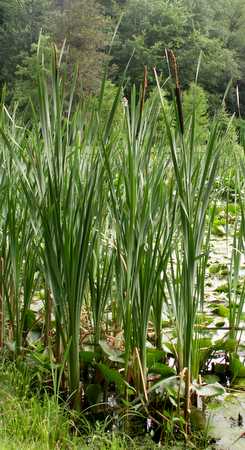
Cattails grow at the edges of ponds and lakes and in marhes.
The Cattail flower is in two parts. The top or tail contains the male flowers. Just below are the brown female flowers.
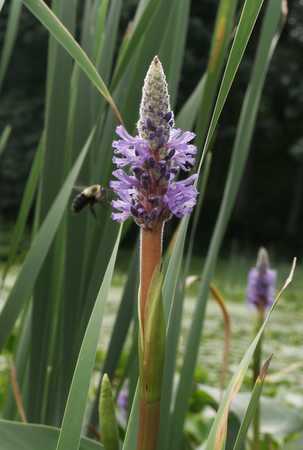
A Pickerelweed flower, growing among Cattails, attracts a Bumble Bee.
The Arrowhead, named after the shape of its leaves, flowers from July to September. The plant produces an edible tuber that was a favorite food among Native Americans.
Swollen Bladderwort is a carnivorous plant. Below the surface, it has leaves that suck in tiny animals to eat. It grows in still water ...
...and can be found in the lily ponds at Forest Park.
Fringed Loosestrife grows in wet areas around the ponds. The flowers mostly face downward, like the one on the left.
Swamp Milkweed in flower.
Pink Azalea is a wild cousin to the flowering shrubs you see in many yards. It blooms next to ponds and swampy areas in early spring.
This Flame Azalea is uncommon to see growing as far north as Springfield, but it is listed among the flora growing in the park in an annual report written in 1903, along with the Pink Azalea. It is most commonly found in the mid-Atlantic states, making a spectacular show of color in the Appalachian Mountains. It blooms in June, over a month later than the Pink Azalea. Like the Pink Azalea, the Flame Azalea grows by the side of a pond.
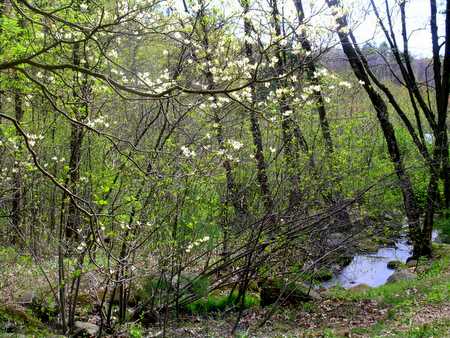
The Dogwood tree with its white blossoms is most often seen near ponds or streams in the wild.
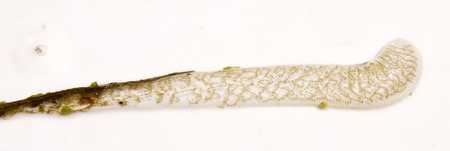
Sometimes a sharp eyed student finds a mystery in his net, like this minuscule egg sack, which hasn't been identified yet.
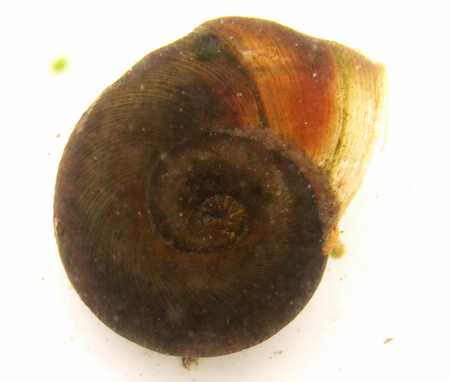
A Wheel Snail; a small, numerous pond organism.
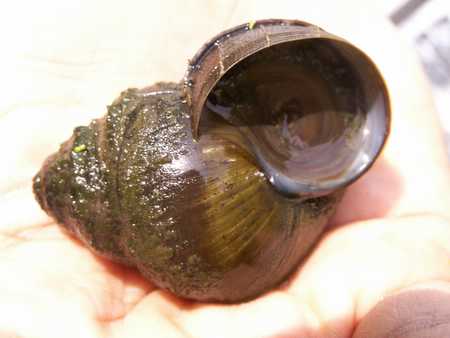
A Winkle Snail, about 2 inches long.
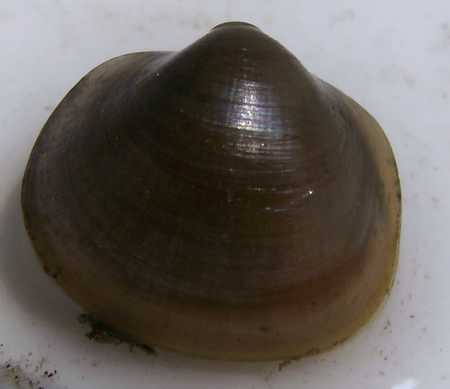
A tiny Papershell Clam.
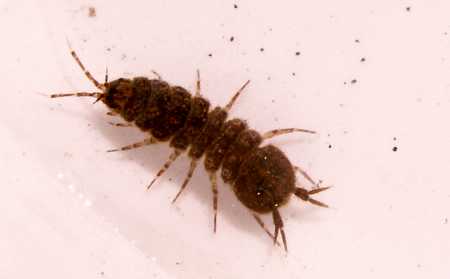
An isopod, a tiny crustacean.
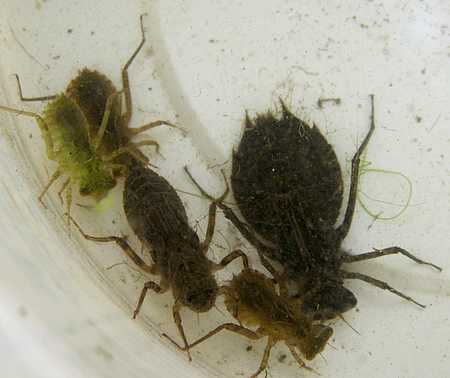
A variety of drangonfly nymphs, one of the most numerous insects caught in the pond.
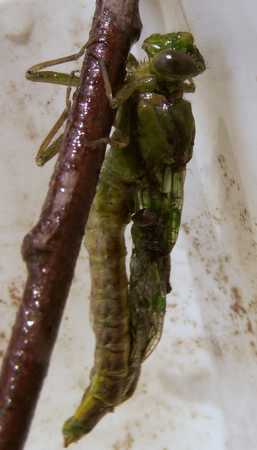
A dragonfly in the process of metamorphosis, changing from a nymph that lives in the pond to a flying insect.
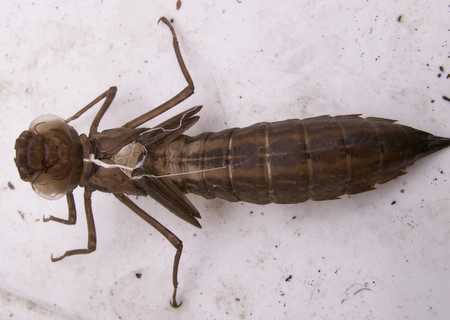
A close-up of the exoskelton the dragonfly leaves behind. You can see it is empty by looking at the clear shell where the eyes were.
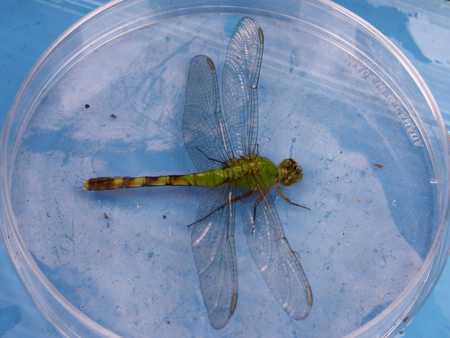
A dragonfly, the Eastern Pond Hawk, that has completed its metamorphosis.
Another adult dragonfly, the Blue Dasher. Its adult habitat is also ponds.
The Yellow-Legged Meadowhawk is commonly found in fields or near bodies of water late in the season -- July through October. This one was found near the cabin on Porter Lake.
A Halloween Pennant dragonfly, found near the Duck Pond.
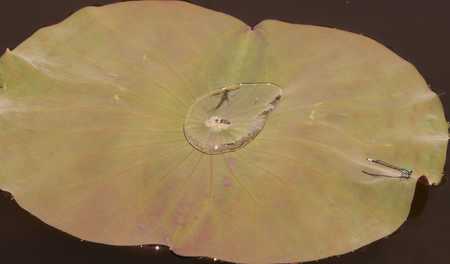
An adult damselfly lands on a lily leaf where a damselfy nymph is caught in a pool of water.
The Common Water Strider moves along the top of the water, hunting for insects that have risen to the surface or have fallen onto it.
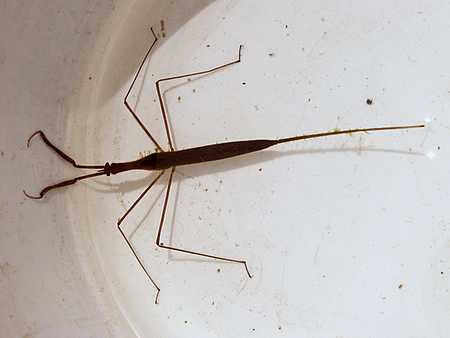
A Water Scorpion. This pond insect breaths through the two tubes that look like a tail.
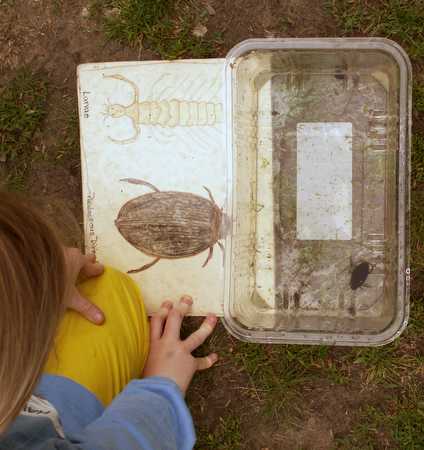
A student studies the Diving Beetle.
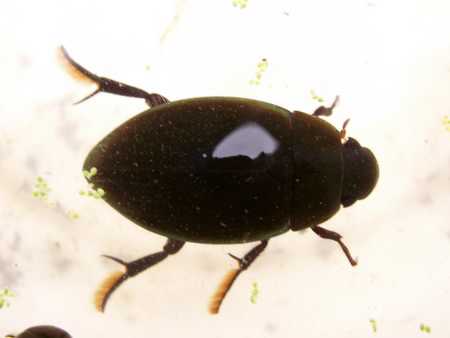
A closeup of the Diving Beetle.
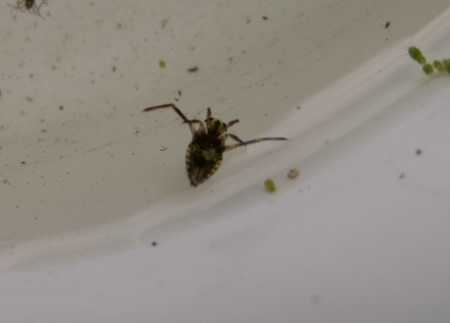
A Backswimmer, named for the way it uses its legs to swim.
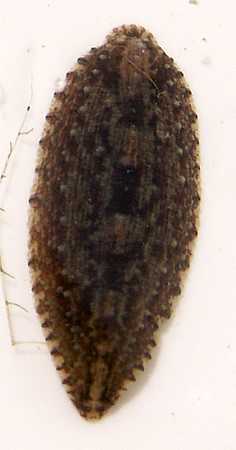
A Freshwater Leech, a member of the aquatic worm family.
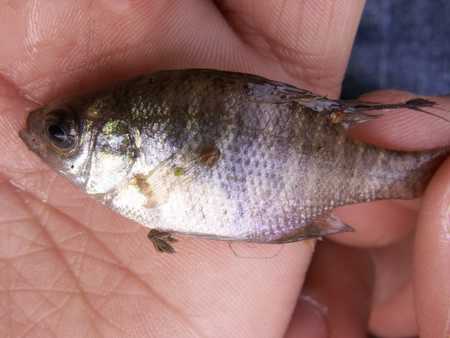
A young Pumpkinseed fish.
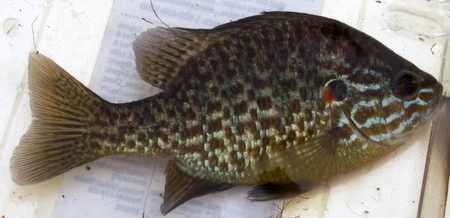
An adult Pumpkinseed, about 5 inches long.
A small Catfish.
The Eastern Crayfish, about 4 inches long, resembles a small lobster with thinner claws. It lives in ponds and small streams, eating plants and small animals.
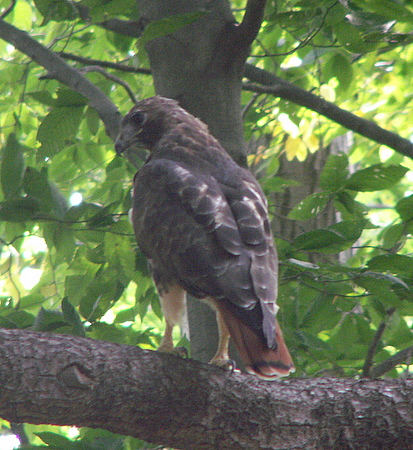
Tadpoles at the edge of the pond waiting to be netted.

A young tadpole.
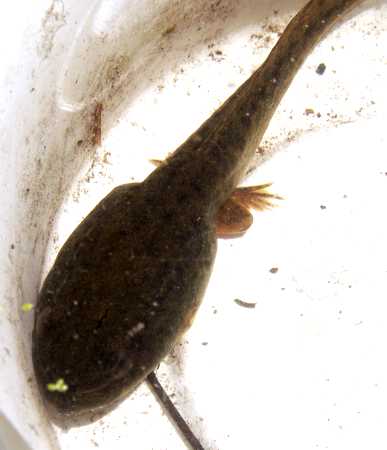
A tadpole in the first stage of metamorphosis, growing hindlegs.
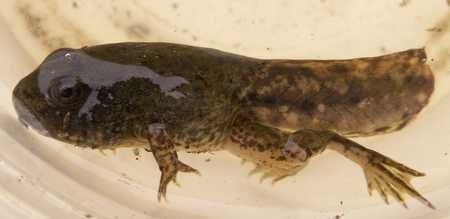
A tadpole continues its metamorphosis.
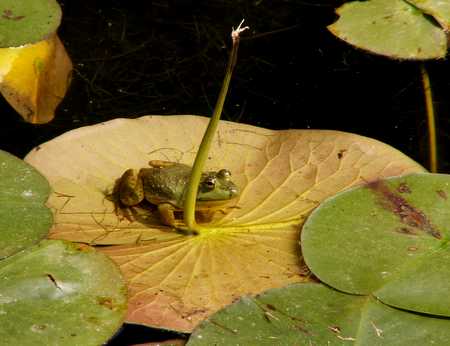
A Bullfrog in its adult form sits on an upturned lily leaf.
A Pickerel Frog.
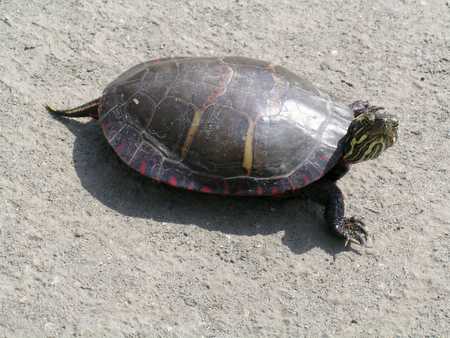
The Painted Turtle is an omnivore. You can often see them warming themselves on rocks or logs in the ponds and lakes.
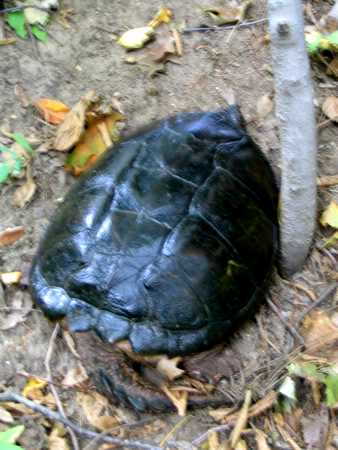
Snapping Turtles, like this specimen found climbing up a hill alongside Lake Porter, is at the top of the pond food chain: the snapper eats other organisms in its habitat, but it has no predators.
A close-up of the Snapping Turtle's head. This was found covered with mud, close to a trail near the skating pond. It was about a foot and a half long.
This Snapping Turtle, about 16 inches long, floats near the edge of one of the lilly ponds in late March. Snapping Turtles bury themselves in the bottom of ponds to keep warm in Winter. Like all cold blooded animals, it depends on external energy sources (such as the sun) to maintain its body temperature. This one must have just risen from the mud to warm itself -- it appeared "frozen," not attempting to swim away or move at all despite attracting many onlookers in the park, some of whom got very close to take pictures.
The Common Loon has a distinct tremulous wail that can be heard clearly at night. In its habitat of freshwater lakes it dives for fish and eats them while still submerged.
The Red-Winged Blackbird male, at top, and female are commonly found nesting near ponds and swamps. The red spot and yellow fringe on the wings of the male tend to fade in late summer and fall. The female is colored to blend into her nesting area.
The Spotted Sandpiper's habitat is ponds and streams.
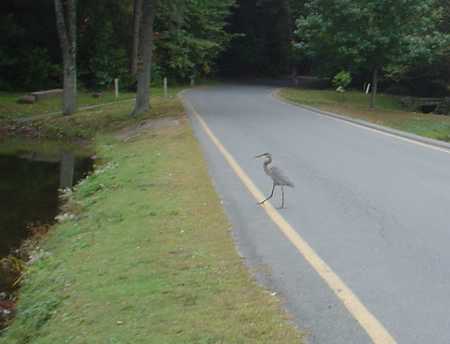
A Great Blue Heron crosses from one pond to another looking for a meal. Frogs and tapdpoles are among its favorite foods. It, too, is at the top of the food chain in the pond.
A close-up of the Great Blue Heron.
A rare visitor to the park, a Great Egret stops by Porter Lake. Marshes are its habitat.
This Green Heron came to feed at the edge of a lilly pond while an ECOS class was collecting specimens. It is much smaller than the Great Blue Heron -- about the size of a crow. The Green Heron eats mostly small fish, but it also eats crustaceans, mollusks, insects, reptiles, amphibians, spiders and leeches, standing very still on shore or in shallow water to await prey. They sometimes drop food, insects, or other small objects on the water's surface to attract fish, making them one of the few known tool-using species.
A Muskrat forages in the grass near a lily pond. It mainly eats water plants.
This Mink, which was spotted near the covered bridge in Forest Park, eats a wide variety of animals, including rodents, muskrats, fish, birds and frogs. Minks are members of the weasel family.
Beavers, North America's largest rodent, live in lodges built from layers of branches, mud and reeds and reached by tunnels under water. They eat the bark and leaves of broadleaf trees, and stash branches near their lodges for winter use. Beavers also create ponds by damming small streams. They are active mainly at dusk and night, year-round.
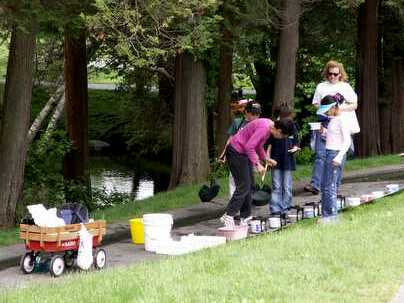
ECOS teacher Ms. Martinez orgnanizes a viewing station for the students to see what their class caught.
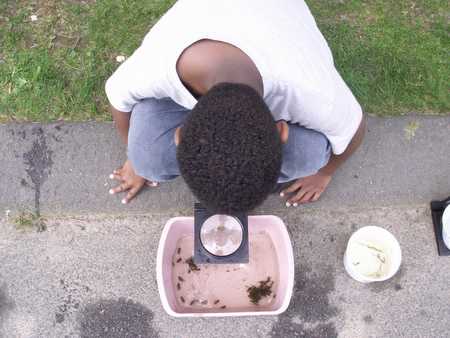
A student uses a magnifier to look at one of the organisms on display.
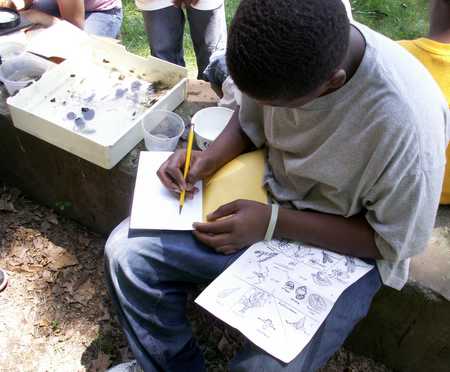
Taking a census of tadpoles, frogs, plants and everything else captured in the morning is part of every class at the pond. After a count is made, the students return the specimens to the pond.
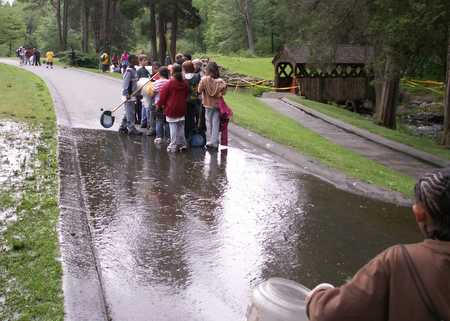
Time to pack up the tools and head to the cabin for lunch.
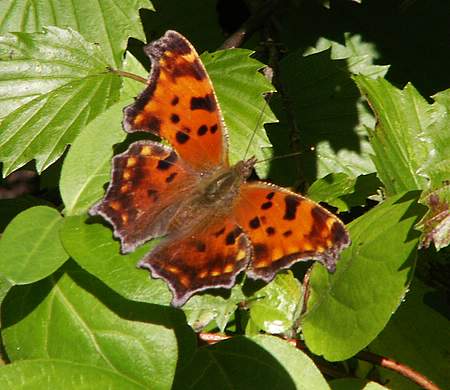
ECOS teacher Mr. Freedman puts the pond experience in perspective, illustrating how producers -- plants such as Elodea and Duckweed -- provide sustenance at the bottom of the food chain, and where the other organisms fit in.
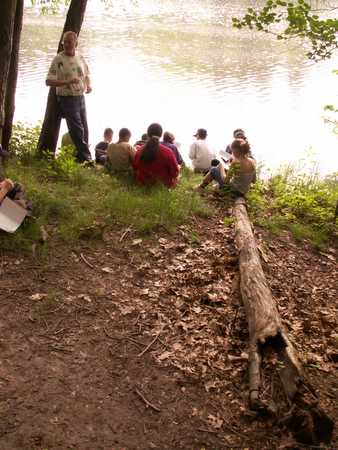
After lunch activities include a "quiet sit," where the students find a place near the lake to be still, write down what they hear, and draw something around them, aiming to capture in their notebooks the elements of the habitat surrounding them.
Fifth grade students use rafts to determine how fast the Pecousic River is flowing. They drop the rafts from the bridge and time how long it takes them to move 100 feet.
Some of the rafts that passed the flotation test.
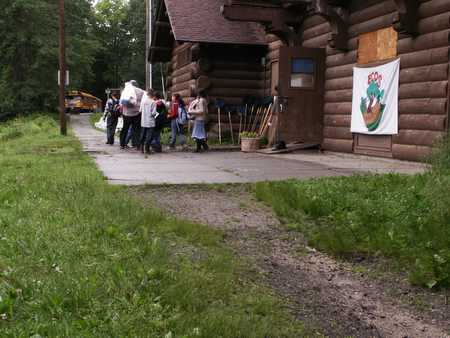
When their afternoon activities are done, the 4th graders leave behind their drying nets at the cabin and head for the buses that will take them back to their school in time for dismissal.
Posted by mpdoran at February 14, 2011 1:03 PM